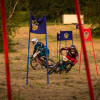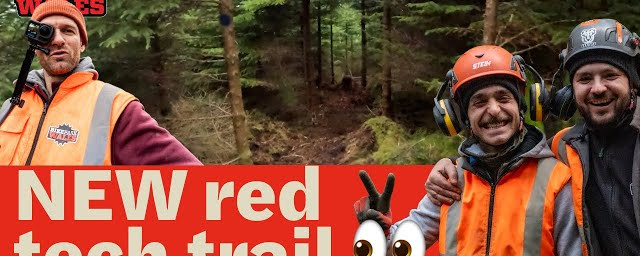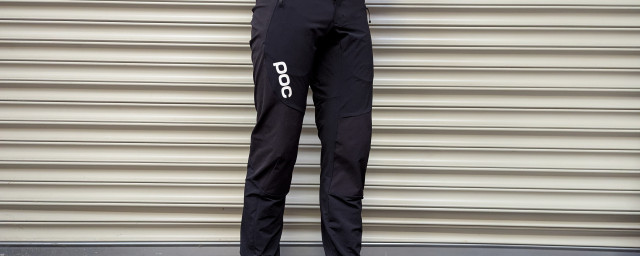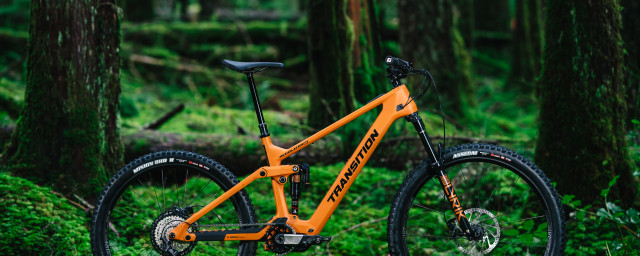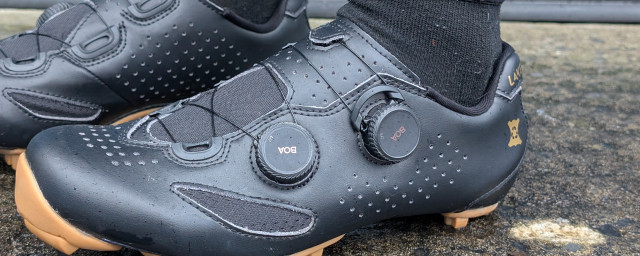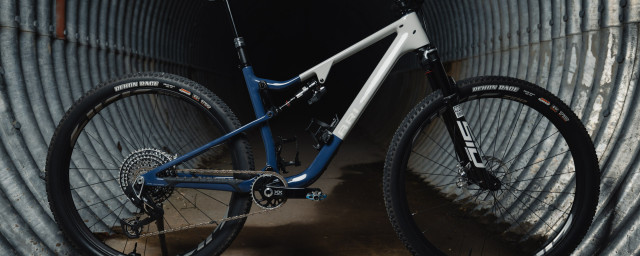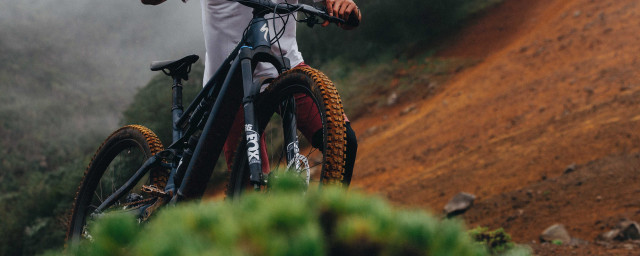Industry Insider - MTB career highlights with Dom Mason of Mason Cycles

[Words by Steve Thomas - Photography from Mason]
Mason Cycles has a near-cult following within the discerning world of off-road and endurance cycling, and with good and well-proven reasoning. The Sussex-based brand is the mechanical offspring of Dom and Julie Mason, who have a long family history within the UK bike industry and in designing and creating solid class-leading off-road bikes.
- Industry Insider: MTB career insights with Andi Sykes of The Rider Firm, Privateer and Hunt
- Industry Insider: MTB career insights with James Bracey
- Industry Insider: MTB Career insights with Joe McEwan of Starling Cycles
In your own words, who are you and what do you do?
I’m Dom Mason. I’m the founder, creative director, and designer of Mason Progressive Cycles.
What is your job?
In addition to designing all of our products, I run the company, dealing with our skilled Italian makers and taking care of many important details.
How did you get into what you do?
I’ve been riding bikes, playing on skateboards, and having fun in the outdoors all my life. Originally, I trained as an engineer, and then I taught engineering and design: fabrication, welding, hydraulics – all that kind of thing. Meanwhile, my brother Damian started a dirt jump bike brand called DMR and a distributor called Upgrade Bikes. He got approached by Kinesis to promote their carbon forks in the UK, so he asked me if I wanted to get involved. I’d been teaching for nine years, so I said ‘Yeah, let’s try something new. ’
The best way we could grow Kinesis in the UK was to design our own frames, tailored to British riding, to complement the brand’s carbon forks. So that’s what I headed up, creating frames like the Maxlight, Crosslight and Racelight. Right from the start, I wanted to approach design with an open mind, bringing my engineering background to find different solutions that could bring real improvements – rather than just following the direction of the rest of the industry.
How long have you been working in the bike industry?
I made the move from education to the cycling industry in 1999, so that’s 25 years: the first 15 with Upgrade and Kinesis UK, then the next 10 as Mason.
How have things changed since you started in terms of the industry dominance by major brands vs smaller independent brands finding their place?
I think there has been a switch in the relationship between the big corporations and smaller brands like us. Just 20 years ago, the likes of Trek and Specialized would be setting the trends. I’d go to Eurobike, and the new fashion would be for aero crit bikes or some other niche. Then, the rest of the industry followed.
I have a private theory that the ‘fixie trend’, although fairly fleeting, may have sparked a change. Many brands were adopting the ‘messenger chic’ of steel fixies, but in the process, customers were discovering the joy of simple bikes with the scope for endless customisation. Choose a CNC Japanese stem or a set of boutique wheels from the USA. Make it yours. And possibly, the tables started to turn here. Customers began looking to small specialist brands for inspiration, and the big guys were now starting to do the same. This has been the case ever since. Want to find the next big thing, the next innovation? Look to the small craft-oriented brands. As a community, we’re there, pushing the boundaries and creating ideas you’ll see on the big-name websites in a year or two.
Is there anything you wish you could change about your role/job?
Oh yes. In an ideal world, I would concentrate solely on design and creative tasks. But when you own and run your own company, you spend 90% of your time running things: all those day-to-day tasks that are essential to operation but take me away from the part of the job I love the most: creating new bikes that people will love.
What does the average week look like?
It’s a real mix. I spend time with our production manager Mark, ensuring that production in Italy is all going as it should – being certain that the right makers are making the right frames in the right sizes. Then there’s checking that the painting and shipping are all on track. As for most of us, emailing and communicating occupy a huge proportion of my week.
But that’s vital, of course: customers are full of questions, and we want to help them understand their options so they can work out what shape their dream bike should take. Listening to customers like this is vital for me: by keeping my ear to the ground, I maintain my understanding of what our riders want. When all this is taken care of, I will find the time to design and create the new products we’re bringing to the range in 2025. I don’t think I’ve ever been as busy as this.
What advice would you give to someone who wants to do your job/what you do?
Above all, become an expert. You have to be devoted to knowing your stuff and building your knowledge – because it’s this knowledge people rely on when they invest in a bike you’ve designed. And you have to care - not just about numbers and business and spreadsheets - but about how you can improve the ride and the experience of the person who will own each bike. Without that, I’d just be going through the motions. I want everyone who rides a Mason to know I care about their adventures.
What do you like most about what you do?
For me, the prize is watching our creations being ridden by people all over the world, having adventures and getting their feedback. I love going to Italy and working with the makers, knowing them like family and being able to actually be on the factory floor when they're bending our tubes and welding our frames. Being part of the engineering process is really important to me.
If you weren’t doing this, you would be?
I'm really interested in architecture and photography, so I would probably still be a designer or creative of some sort. Interior design, perhaps? If I were an architect, I think I’d love to be doing something bespoke, something different – working on site trying new ideas. Or just travelling of course…
What have been some of the highlights of your career?
The first big highlight was making Kinesis UK a success from almost nothing; that was quite a thing. I get real satisfaction knowing when a design – born from an idea in my head – gets a great review and people love it. From the early days on, something which definitely stands out is our rider Josh Ibbett winning the Transcontinental on a Definition – one of our first bikes.
That’s when I knew my vision of a fast all-road endurance bike made sense, and it was really the start of our ‘FastFar’ maxim. It was a really outstanding achievement for Josh, and it was so good that we could do it together.
It’s always a highlight for me when our supported riders do amazing rides over the years – whether they’re racing or adventuring. And, of course, it’s always great when I hear back from people who have bought a bike and they're absolutely loving it. They send us photos from their rides all over the world and it's wonderful to see.
The industry finds itself in a tough situation of late. Do you see it recovering any time soon and, if so, what will brands need to do to stay relevant and afloat?
There are definitely signs that all the waves thrown at the industry in recent years are starting to die down. I think a recovery is underway. We are focused on making the right bikes for our customers – and people recognise that clarity and determination. This recovery will be easier for the brands committed to what they do and who are seen to be doing something more significant than just jumping on trends and bandwagons.
Our industry can’t sustain that way of working anymore. And for us at Mason, some reassurance comes from the fact we’ve never over-stretched ourselves financially. We’re fairly sensible in the way we run the financial side of things, and that’s given us a kind of resilience that wouldn’t be there if we’d been taking big risks over recent years.
What do you dislike most about the cycling industry?
I have a real problem with the concept of the ‘model year’ and the idea of planned obsolescence. A well-designed product should, and can, keep delivering joy and performance indefinitely. A bike doesn’t become old news when it’s not in this year’s colour. Of course, progress moves on, and changes happen. We’re on version three of some of our models now, but that’s due to changes and refinements that I felt would really help the rider experience. Our version one bikes are still out there, racking the miles and taking their riders on big adventures.
Of course, to some extent, we’re in the hands of the component manufacturers when it comes to longevity and compatibility. So that’s why I design with configurability and adaptability in mind. Innovations like our own MultiPort cable routing - and the industry-wide arrival of UDH - give riders choices about how they specify and set up their components. My vision is that if a customer switches their brakes, gears, or wheels at some point in the future, a Mason frame should be able to accommodate as many future choices as possible. I want our bikes to grow old with their riders!
How do you keep things balanced when your hobby becomes your job?
It’s important to have hobbies and interests outside the world of cycling, so for me, that’s skateboarding – my original passion. I go snowboarding when I can, which I love, too. Music, photography and being in the outdoors are also very important to me. If your only thing is riding bikes and your job is designing and selling bikes, then I think it's not particularly healthy. You have to have other interests and things that you do outside – whether that’s another sport or something creative. There’s a professional benefit, too: I derive a huge amount of my creative inspiration from these other interests and passions, which I think makes me a better designer.

